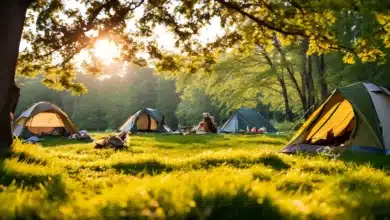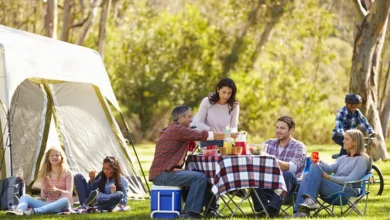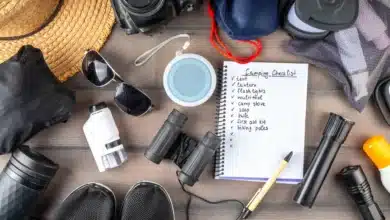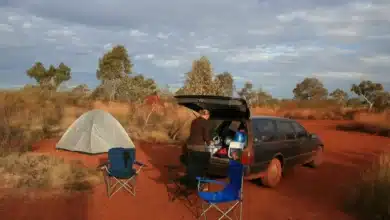You Don’t Need a Sleeping Bag for Camping
No, You Don't Need a Sleeping Bag for Camping (With Alternatives)
Camping is a beloved pastime for many people. Getting out into nature, sleeping under the stars, and disconnecting from technology can be rejuvenating. However, one common misconception deters some people from trying camping – the idea that you need an expensive sleeping bag. This simply isn’t true.
While sleeping bags are useful for keeping warm, there are many alternatives for staying comfortable without one. As you’ll learn, with a little creativity, you can enjoy camping without a sleeping bag.
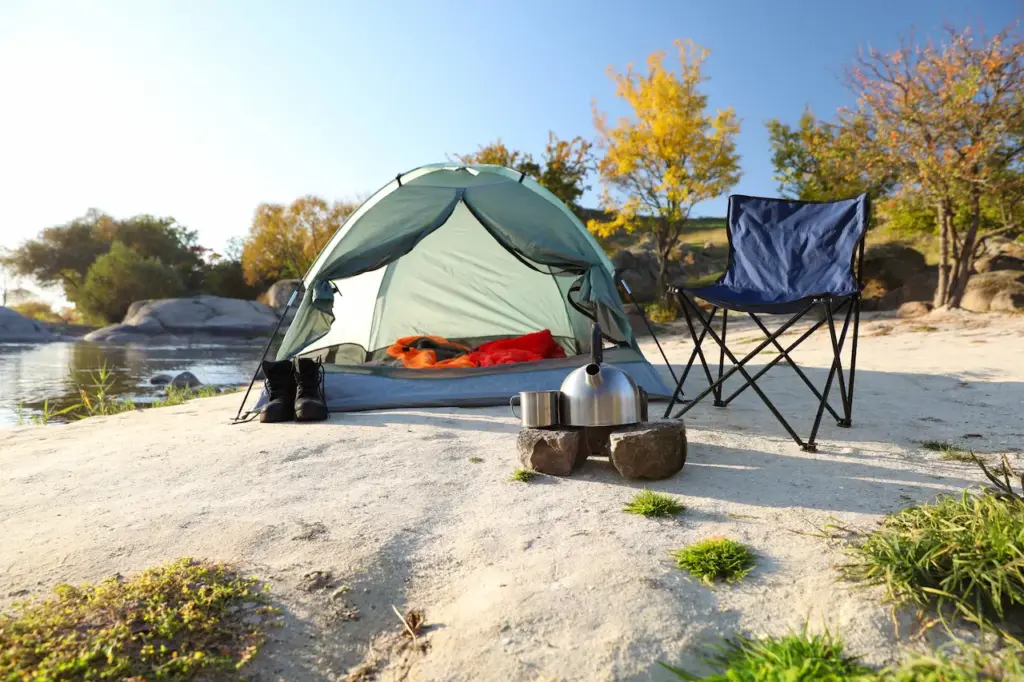
Camping Without a Sleeping Bag
Many novice campers believe sleeping bags are an essential piece of camping gear. Images of people snuggled up in mummy bags by the campfire make them seem like a requirement. However, sleeping bags are not mandatory for camping. Plenty of experienced backpackers and minimalist campers skip sleeping bags altogether. As long as you prepare properly for the weather and sleeping conditions, a sleeping bag is not a necessity.
For summer camping in mild weather, a sleeping bag is excessive. Warm clothing, blankets, sleeping bag liners, and other insulation may be adequate, depending on the temperatures. The key is dressing properly for the climate and having durable insulation underneath you to protect you from the cold ground. Quality bedding that traps heat can keep you just as warm as a sleeping bag.
Cold-weather camping without a sleeping bag takes more planning. You need ample insulation and protection from wind, rain, and snow. Creating a shelter and wind block, wearing lots of insulating layers, and using thick, weather-resistant bedding is key.
With the right preparation, you can comfortably get through even freezing temperatures without a sleeping bag. Don’t let the idea of buying an expensive bag deter you from camping. There are plenty of sleeping bag alternatives to keep warm.
Sleeping Bag Alternatives
If you want to go camping but don’t have a suitable sleeping bag, there’s no need to fret. Many everyday household items can substitute for a sleeping bag and provide insulation for comfort and warmth.
Blankets, throws, quilts, sleeping bag liners, and your clothing can all be adapted to create makeshift bedding for camping. And if you’re on a tight budget, you can even rent camping gear instead of purchasing. Read on to learn about various sleeping bag alternatives.
Sleeping Bag Liners
Sleeping bag liners are a useful compromise if you want lightweight, portable insulation without committing to a full sleeping bag. Liners slip inside sleeping bags to provide extra warmth and protection. However, they can also be used on their own. Basic liners help insulate against the cold ground, while super thick, insulated liners can be adequate standalone bedding for some climates.
Liners come in various shapes, sizes, materials and thicknesses. Rectangular, mummy-shaped, and hooded options are available to cater to different sleeping preferences. Cotton, silk, polyester fleeces, and even laminates are used. Lightweight liners for summer start around 200g. Insulated winter liners over 1000g provide substantial protection for cold weather. Features like length extensions, pillow hoods, and sheets for securing sleeping pads also help boost comfort.
Overall, sleeping bag liners provide excellent, adaptable insulation at lower costs than full sleeping bags. They stuff down small for easy packing, and many are lightweight and breathable for carrying on warm-weather trips.
For bulkiness-averse minimalist campers or occasional car campers not needing serious technical sleeping bags, they’re a versatile pick that still retains beneficial sleeping bag properties. You can even boost their warmth by supplementing them with blankets or throws.
Throws and Blankets
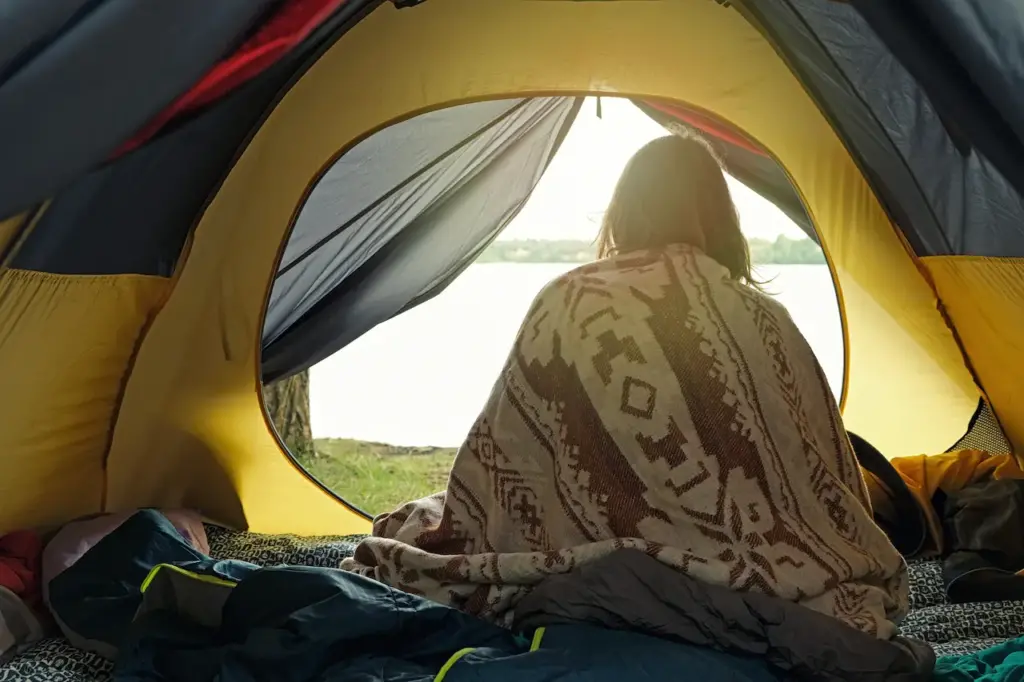
For improvised bedding, use camping instead of sleeping bags, and don’t overlook everyday household blankets and throws. They can adapt to multiple ground surfaces while providing ample insulation. Standard cotton, fleece, wool, and even weighted blankets can all work, along with backpacking-specific options like down and wool camp blankets.
The best blankets for camping without a sleeping bag have some key qualities. They compress down small to save pack space and weight. They insulate well in their thickness and fabric to retain body heat. They withstand frequent packing, unloading, and machine washing. Materials like ripstop nylon, high-quality down, and wool blends are durable options that meet these criteria.
From extra bedding layered inside a sleeping bag to standalone insulation on cold nights, blankets supplement warmth well. Using an insulating sleeping pad underneath helps block ground cold. Choose blanket weights and sizes suitable to the temperatures and your camping style.
Rectangular, mummy-shaped, and hooded styles are available. You can also waterproof lighter blankets for all-weather protection. With the right camping blankets keeping you cozy, who needs a sleeping bag anyhow?
Quilts
Sleeping bag alternatives don’t get much more efficient for insulation than ultralight backpacking quilts. Weighing under two pounds with premium fill down or Primaloft, they reduce weight and bulk from standard mummy sleeping bags. Quilts wrap snugly around the top and sides while leaving the back exposed to your sleeping pad.
Coupled with warm clothes and hats, they conserve warmth impressively while reducing the materials used. Their minimalist, utilitarian design dropped unnecessary weight, so they warmed as efficiently as possible.
Backpacking quilts skip thickly insulated sleeping bag undersides by intention. Sleeping pads give essential bottom insulation against the cold ground instead. Well-rated sleeping pads specifically for quilting have higher R-values to account for this. Their designs ensure no slippage compromising this heat flow barrier.
Meanwhile, the reinforced edges, durable water-repellent finishes, and tight hoods optimize quilts’ stability and weather resistance. Popular options use premium 850 fill power down stuffed generously into baffle grids or waterproof/breathable synthetic fills arranged into sewn-through compartments.
Hobo quilts and convertible tops open into blankets for adaptable warmth, too. Light yet supremely insulating, quilts are optimal minimalist sleeping bag alternatives for ultralight backpackers and thru-hikers. Their specialized designs allow for dropping weight while gaining warmth.
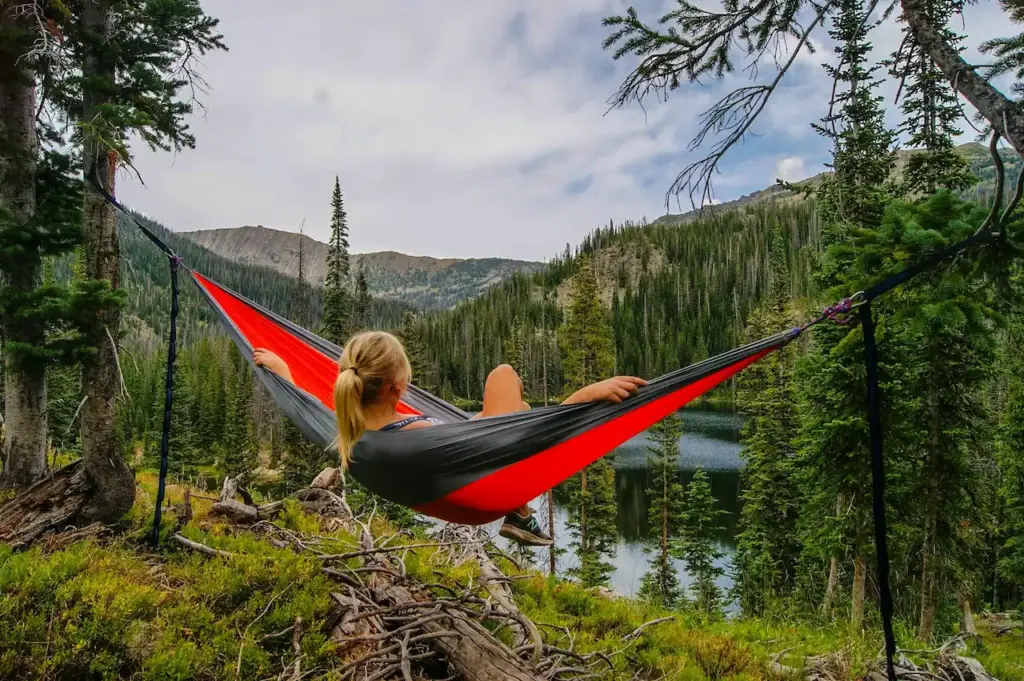
Warm Clothes
Having proper thermal regulation with warm clothes is key for comfortable camping without heavy insulation like sleeping bags trapping you inside excessive material bulk. Thankfully, clothing technology for lightweight insulation and breathability improves continually. Choosing the right selection of weather-appropriate internal and mid-layers, hats, gloves, and socks can boost warmth far more than you’d assume.
Merino wool and synthetic thermal fabrics like polyester fleece excel at retaining heat yet staying breathable and quick-drying. Despite their thin appearance, technical fabrics utilize weaving methods that maximize air pockets and trap body heat. Layering strategically places thicker insulation at heat loss points like the core, head, and extremities.
Snug base layers keep skin dry and warmer by wicking moisture outward. Mid-weight insulation pieces add adaptable warmth for variable conditions and temperatures. Modern waterproof yet breathable rain layers also retain precious warmth while blocking wind, storms, and snow. Using the right clothing systems together creates significant warmth improvements over random garments lacking intentional layering focus.
Consider your sleep system another layering opportunity as well! Combine thermals, hats, and gloves inside blankets, bag liners, and sleeping pads cocooning you in breathable insulation. Gear choices also matter for keeping warm. Closed-cell sleeping pads insulate better from cold ground than inflatable options.
Emergency Bivvy Sacks
Emergency bivvy sacks provide lightweight, compact emergency shelter and warmth without the bulk of full sleeping bags. Waterproof and windproof outer layers block elements from compromising body heat. Reflective interior coatings retain radiant heat from the body. Resulting cocoon environments trap warmth effectively even in extreme cold.
Weighing about 100 grams, these minimalist sacks stuff tightly into pockets for emergency warmth when caught off guard. But they also work great paired with sleeping pads and blankets for ultralight backpacking without full sleeping bags. Used together, the layered bedding creates ample insulation for 3-season comfort at mere fractions of traditional bag weights.
For occasional and impromptu adventurers, plus emergency preparedness kits, bivvies are convenient insulation you can take anywhere. While too constraining for long-term comfort, they allow for preserving warmth and location signalling when unplanned emergencies arise far from camp.
Hot Water Bottles
Simple reusable rubber hot water bottles make inexpensive, versatile sleeping bag alternatives. Fill them with boiling water at night, then quickly cap and wrap them in towels or blankets to safely lend ambient warmth to your sleep system for hours. The thick rubber retains and slowly releases heat without leaking or puncturing. Cotton/flannel coverings prevent scalding direct skin contact.
Modern hot water bottles improve upon old designs with features like soft faux fur fabrics, removable plush covers for cozy skin contact, and elasticized shapes that conform to bodies better. A little goes a long way – their small size takes little space while generating impressive warmth placed strategically in bedding. Tuck them inside blankets by feet, near your core, and behind knees where blood runs close to the skin for efficient warming.
Combining a couple of bottles supplements the heat from high R-value sleeping pads already blocking ground loss. For car camping, refilling with boiling water from a camp kettle each night means you can keep using them over and over again.
Tents/Shelters
While not bedding per se, tents and shelters greatly enable comfortable, protected sleep without sleeping bags. They create a microclimate shielding from external elements like wind, rain, and snow that rapidly steal body warmth. Just blocking exposure can help you feel up to 20 degrees F warmer! With a sturdy overhead barrier and quality sleeping pad insulation below, your nest stays warmer and safer.
Free-standing tents provide ample interior space for you and bedding to spread out and move. Ultralight tarps and bivvies have less room but maximize weight/bulk savings critical for hiking distances. Shape/size that shelter space carefully around intended gear and sleep positions. Taller tents allow more air volume to trap heat but watch out for gaps leaking warmth.
Fabrics and construction choices also affect shelter warmth for sleeping bag-free use. Ripstop fabrics with factory-taped seams are weatherproof and durable. Reflective tent linings bounce radiant heat back inward. Mesh panels enhance ventilation, controlling interior condensation. Pitch tents together so the wind can’t steal heat inside. Site them strategically behind natural windbreaks as well.
Wool Insulation
Natural wool delivers stellar warmth for its weight, even when damp. Used extensively by military and search crews, wool blankets retain insulating capacity when wet, unlike down. The fabric construction traps air pockets, while wool fibres themselves absorb and then slowly release body moisture as heat. Garments and blankets maintain an equilibrium temperature, buffering bodies from environmental temperature shifts all night.
Prized merino wool comes from Merino breeds boasting fine, crimped fibres, maximizing loft and warmth. Premium options use thick, dense weaves with tightly bound stitches, preventing cold air penetration while avoiding compressed areas that rob warmth. Compared to cotton, which offers zero insulation when wet, wool still insulates when moderately soaked by rain, snow, or sweat. The lanolin wax coating fibres also resist absorbing much moisture, to begin with.
For sleeping bag alternatives, wool makes excellent improvised bedding material. Backpackers favour ultralight merino layers and midweight blankets, providing ample warmth and supplementing sleeping pads.
The blankets minimize unnecessary bulk from full mummy-style sleeping bags while retaining moisture-resistant insulation. For damp climates and stormy, high-exertion trips, wool’s warmth despite wetness, offers critical insurance. Even damp, sweaty wool garments worn to bed bolster insulation within other bedding.
Cheap Sleeping Bag Options
While investing in a quality sleeping bag seems daunting, don’t let limited funds prevent you from camping adventures! Plenty of ways exist to acquire gear for cheap or even free. And you may find that lower budget options better suit you than expensive name-brand sleeping bags anyhow. Here are some possibilities for procuring sleeping bags inexpensively.
Check thrift stores, Craigslist, or Facebook Marketplace for substantial savings on used sleeping bags in great condition. Often, barely worn bags get donated or resold at a fraction of retail costs. Garage sales and friend networks may yield hand-me-down bags as well.
Join Buy Nothing community groups gifting used goods freely to save money while keeping functioning items from landfills. You may luck upon free sleeping bags and accessories given away by neighbours and members. Think outside, just sleeping bags too – sometimes quilts, blankets, and sleeping pads get offered up to happily take camping.
Many outdoor retailers run periodic sales, clearance racks, and discounted showroom models to access steep discounts on both budget and name-brand options. Sign up for email/text alerts to stay notified of current deals and price drops.
Consider renting a sleeping bag short-term instead of purchasing it to save substantially. More details on economical sleeping bag rental options are in the next section!
Renting a Sleeping Bag
Purchasing an expensive sleeping bag for infrequent use can seem wasteful. Instead, seek out rental options from gear libraries and outfitters! Rentals allow trying various models to learn your preferences before buying. Cost savings mean more budget for other gear, too. Best of all, renting lets novices test camping comfortably before investing heavily upfront.
Outdoor recreation stores often rent equipment for hiking, camping, skiing, and more. Quality gear gets sanitized between uses for reasonable daily rates. Large multi-location retailers like REI offer sleeping bag rentals through their websites for in-store pickup. Independent local shops also accumulate rental inventories. Call your nearest locations to ask what sleeping bags they currently rent and reserve ahead during peak season.
Nonprofit outdoor gear libraries like Gear Fix take the savings up a notch by lending equipment for free! Support their missions by becoming a member and then borrowing camping items for weeks at a time. Alongside sleeping bags, handy items like headlamps, camp chairs, and water filters are offered. Make donations yourself to pay kindness forward.
If no formal gear libraries exist in your area, consider informally starting one! Gather a group of friends and collectively buy quality items. Take turns using gear and store together long term. Not only does this maximize usefulness by sharing, but it also builds connections amongst nature lovers in your community. By renting instead of buying sleeping bags, the benefits keep on giving.
Conclusion
A cozy sleeping bag seems essential for camping, yet plenty of insulation alternatives exist for staying warm. Armed with the knowledge of sleeping bag properties to emulate, you can improvise effective options from everyday household items. Layering properly chosen clothing generates ample warmth, too.
Add weather-resistant blankets and sleeping pads to block ground chill, and you stay toasty without carrying unnecessary sleeping bag weight and bulk. For occasional car camping, rental sleeping bags also minimize costs when purchasing isn’t practical.
By understanding these useful alternatives, may you confidently enjoy camping trips without pricey sleeping bag investments detracting from your enjoyment of the great outdoors!
